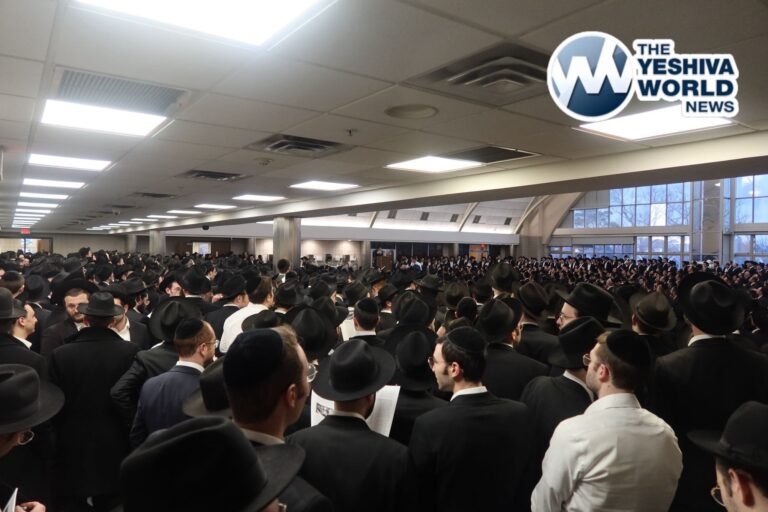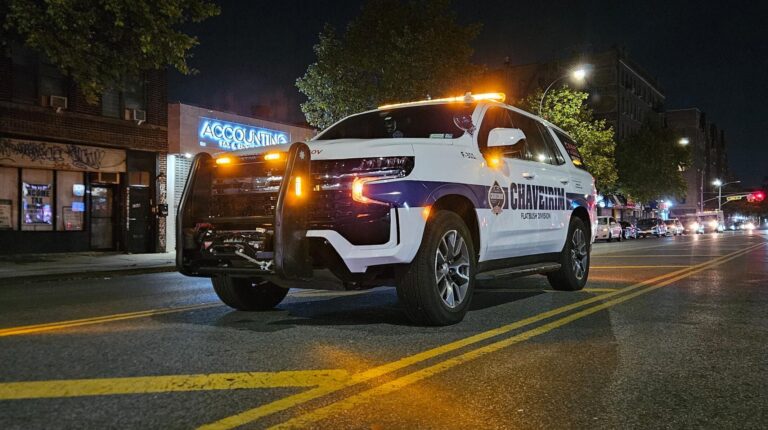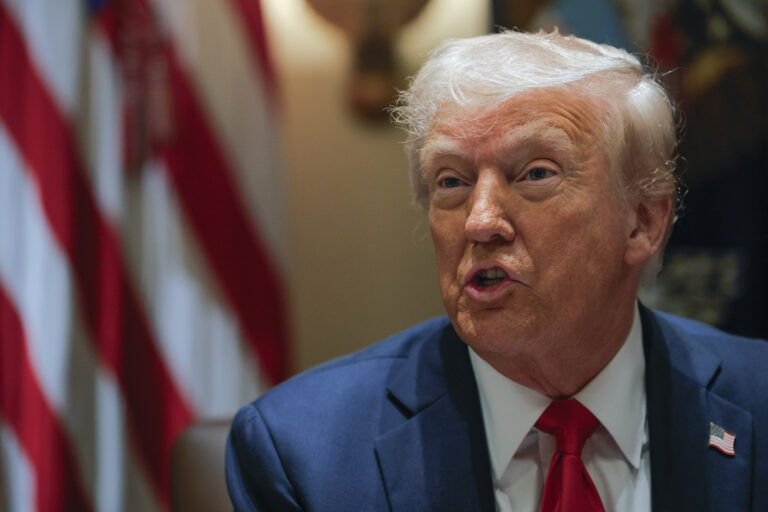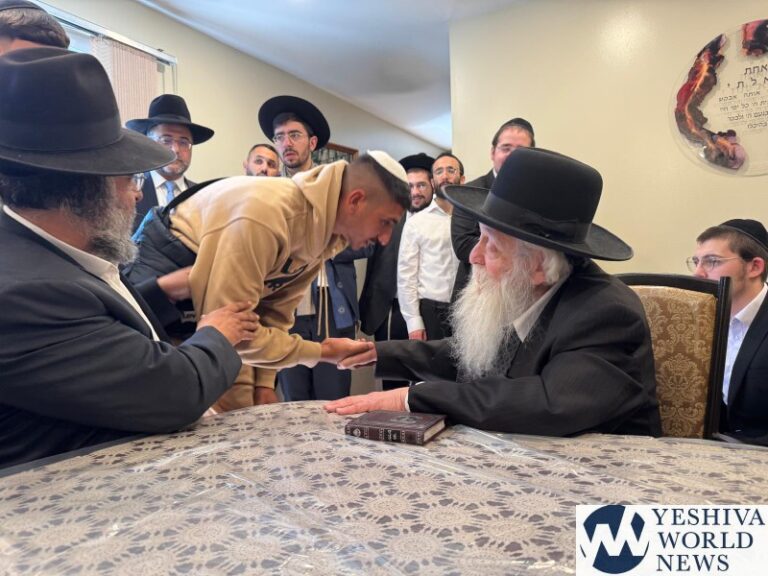By Rabbi Yair Hoffman for the Five Towns Jewish Times
Today was a scorcher, and here is the scenario:
Reuvain, who normally wears a hat and jacket for Tefilah, visits a client at a location with difficult parking. He has to bring along equipment into the client’s office. Reuvain decides to leave his hat and jacket in the car. Shimon greets him and responds that he cannot meet with him now. Reuvain is early, and he, Shimon, is going to Mincha now.
Should Reuvain daven with Shimon without his hat and jacket? Or should he daven later with the proper dress?
THE SOURCES
The Gemorah in Shabbos 10a indicates that there is an obligation to wear a hat as one should daven in a manner that one greets a king. The halacha is codified in Shulchan Aruch Siman 91.
The language of the Shulchan Aruch is that chachomim and their students should dress like this. However, the Kaf HaChaim (91:26) writes that it applies to everyone.
The Sefer Chasidim #57 explains that the pasuk “Prepare to meet Hashem, Oh Israel” teaches us the obligation to dress properly before one davens in front of the King. Indeed, the Sefer Chassidim has strong words for those who only wear a hat on Shabbos.
The Mishna Brurah (91:12) writes that in our times, one must wear a hat for davening and a yarmulkah would not suffice, because it is not proper to stand in this manner in front of important people.
WHAT IF ONE WOULD MISS MINYAN ON ACCOUNT OF IT?
If he has no hat and jacket and if he were to wait until he received one he will miss davening with a minyan, Rav Shlomo Zalman Auerbach zt”l (Halichos Shlomo 2:15) ruled that the Mitzvah of Hechon – preparing oneself to stand before the King – does not set aside Tefillah b’Tzibbur. Likewise, Rav Yitzchok Zilberstein Shlita ruled that he should daven without the hat and jacket (Chashukei Chemed Bechoros 44b).
However, Rav Zilberstein qualifies this ruling as only when it was on account of an accident. But one who purposefully goes somewhere and he know that he will have to daven but does not take along his hat and jacket, he should not daven. The reason is that he is showing that he is mezalzel in the honor of Hashem. Rav Zilberstein explains that this was also the position of Rav Elyashiv zt”l.
DOES IT STILL APPLY IN THE POST KENNEDY WORLD?
In the twenties, thirties, forties, fifties and early sixties – everyone wore a hat. It is a debate as whether or not it was President Kennedy whose example as president caused the nation to stop wearing hats or whether it was just non-conformity in the 1960’s and he was just part of it (See Neil Steinberg’s book Hatless Jack: the President, the Fedora, and the History of American Style). In other words, was President Kennedy a siman or a siba? Regardless, nowadays people have stopped wearing hats.
Some people therefore argue that the Mishna Brurah only applies when people wear formal dress. However, in modern times, no one greets the president of the United States while wearing a hat – so this would no longer apply. One of my Rebbeim zt”l counter-argued that if there was a law that one must keep their head covered, no one would be using a yarmulkah to fulfill this law. Since we do have such a law, it is proper to perform it while wearing a hat.
IT WAS THE COMMUNISTS
Rav Moshe Shternbuch (Teshuvos v’hanhagos Vol. IV #26) argues that even though in Israel it is common practice to stand before important people without a hat and jacket – this is irrelevant. He explains that they learned this practice from the other nations of the world who picked up the practice from the Communists. It is a communist ideal of everyone being absolutely equal that gave birth to the idea that one does not need to dress formally in front of important people.
There is another aspect that one must dress like a Ben Torah. Indeed, the Talmud in Brachos 6b tells us that Rabbi Yehudah would take care to ensure that he was always dressed fittingly before davening.
GETTING BACK TO OUR CASE
If Reuvain could have davened later in a minyan with a hat and jacket (and he normally does so) then it would seem that he should daven later. Although there is a concept called Zrizin Makdimin l’mitzvos, people who are fastidious jump to perform Mitzvos early, we do not see that this sets aside the Mitzvah of davening in proper attire.
The author can be reached at [email protected]












14 Responses
It probably maters if the reason why people today don`t go with hats is because its a change of dress or because people became less formal. judging from how people dress it seems that its the latter.
yasher koach!
thinker123,
If the reason people stopped wearing hats is because it is less formal then why does one not see hats in even the most formal setting?
Even a black-tie event, where the men are wearing tuxedos with coattails, you will not see hats.
In today’s world hats are considered silly – in any setting and in almost any culture – no matter how formal the setting or dress is.
The reason men no longer wear hats is three-fold: changes in transportation, hygiene, and hair.
A man’s hat was used primarily as a means of protection against rain, dust, cold, and the sun. With the growing popularity of the automobile as the transportation of choice for many Americans, the hat became less necessary as men were no longer required to walk long distances outdoors. The images you’ve seen of streets in, say, New York was probably a veritable sea of men in felt hats precisely because walking was one of the only means of getting from point A to point B. Because automobiles offer built in protection from the elements, the hat became redundant.
The second reason the hat lost its popularity is because of the emphasis on hygiene that developed in the late 20th century. In the 1950’s, hair washes were weekly instead of the daily ones that we do today. Because hair washes were done infrequently, a hat was necessary to keep the dust and dirt away.
Finally, the hair fashions of the 1960’s and 70’s meant that men cared more about their hair and how it looked. In the golden age of hats, men typically had trimmed hair in order to ensure that extraneous strands of hair over their forehead would not stick out from underneath their hat. As men started to care more for how their hair looked, the less reason there was to wear a hat that might crush or mess up their ‘do.
What a refreshing d’var torah after a stressful day (what day lately isn’t). On the inyan of why we don’t wear jackets and hats today in formal settings, I don’t think the communist precedent is really relevant anymore. The chairman of the board and CEOs of the largest corporations in the world show up at the White House in black turtleneck shirts. If its good enough for Trump, maybe OK too for davening.
Gadolhatorah
I don’t know what kind of self proclaimed gadol you are. But please consult people a little bit greater then you in torah before making thoughtless statements and going against Rav Sternbuch and other true gedolim based on your feelings that “If its good enough for Trump, it’s good enough for Hashem too.
David Cohen, a valid point is still valid even if it can be challenged with appeal to authority.
No-one would show up at a formal business meeting without their necktie, so necktie should be even more mandatory, than jacket & hat. I have also seen people were a hat but without jacket & tie for Birkas haMozon:- They look so absurd, and no-one would attend meeting wearing hat but without jacket & tie.
Is the author suggesting it’s Halacha to wear a hat?
todays borcellino style hats were originally manafactured for priests in Rome, surprised no one suggested then that it wasn’t behoukotehem
“The Mishna Brurah (91:12) writes that in our times, one must wear a hat for davening and a yarmulkah would not suffice, because it is not proper to stand in this manner in front of important people.”
One of the key words of the MB is “in our times”. What is the need for that? It seems that the MB is saying that we look at what is considered a respectable way of dress in our time period. IMO that is a jacket, tie, and possibly a hat – in that order.
Not sure if a president is a good comparison. We don’t have Kings nowadays, the president is not prestige like a king, he’s an elected politician for a short time, a better comparison to Kings would be the queen of England, Or saudi Kings.
” a better comparison to Kings would be the queen of England, Or saudi Kings.”
Even still, no one wears a hat specifically to see them.
Yes, passerbys don’t wear hats but the royal guards definitely do. Even in the u.s. people wear hats for formal ceremony’s like military ceremony’s and college graduations. Davening is not just “seeing” it’s a formal ceremony.
@MDG –
The author addresses your point. Read the article in its entirety.
@Nach a yid –
That is because of tradition, not honor or respect.
Clowns also still wear hats as well, as do chefs and baseball players.
Real formal ceremonies, such as weddings do not have people wearing hats.